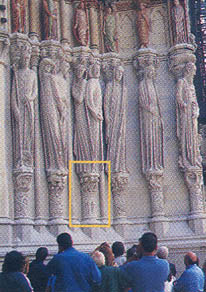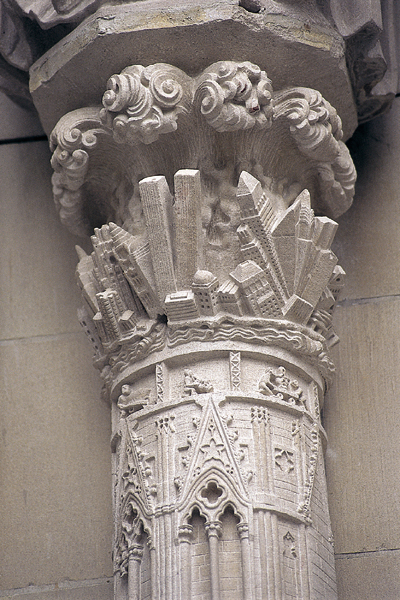The Fall of Jerusalem


The twin towers of the World Trade Center begin to topple as mushroom clouds burst over New York City, in this updated representation of the Babylonian destruction of Jerusalem. The sculpted skyline, from the Cathedral of St. John the Divine in New York City, includes the tilting Empire State Building (far left on sculpted skyline); the diminutive Greek temple-style Federal Building (lower left on sculpted skyline); and the wedge-shaped roof of Citicorp, colliding with the scalloped tower of the Chrysler Building (right on sculpted skyline).
Like many of the limestone carvings on the cathedral’s facade, this fanciful sculpture offers a modern take on the biblical event—depicted in the Gothic style of European cathedrals.
In 587 B.C.E., the fearsome Babylonian king and military leader Nebuchadnezzar laid siege to Jerusalem. According to the Book of Kings, “The chief of the guards, an officer of the king of Babylon…burned the Temple of the Lord, the king’s palace and all the houses of Jerusalem. The entire Chaldean [Babylonian] force that was with the chief of the guard tore down the walls of Jerusalem on every side” (2 Kings 25:8–10). Archaeologists in Jerusalem have uncovered the thick layer of ash and rubble left by the fierce conflagration that destroyed the city.
Already a library member? Log in here.
Institution user? Log in with your IP address.

